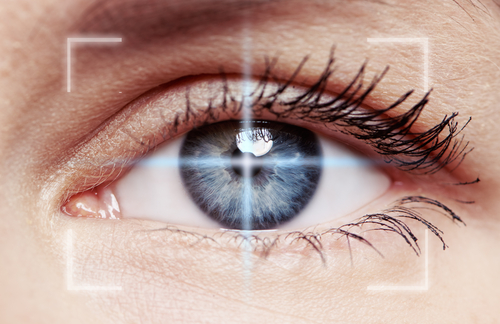Noninvasive Evaluation of Eye’s Nerve Structures Can Help Predict Neurological Damage in FA, Study Finds

A noninvasive assessment of the nerve structures in the superficial membrane of the eye, known as the cornea, can help quantify the severity of nerve cell damage in patients with Friedreich’s ataxia, researchers suggest.
This finding was reported in the study, “Corneal Confocal Microscopy: Neurologic Disease Biomarker in Friedreich’s Ataxia,” appearing in the journal Annals of Neurology.
Researchers enrolled enrolled 23 patients with genetically confirmed Friedreich’s ataxia and 14 healthy age-matched volunteers in the study.
The patients were at different stages of the disease, with 74% requiring aids to walk and only 26% still being able to walk without assistance.
These differences were also noted in the extent of neurological damage among the patients, determined by the Friedreich’s Ataxia Rating Scale (FARS) and the Scale for the Assessment and Rating of Ataxia (SARA). The patients had a mean FARS score of 87 points and a mean SARA score of 22.9 points, both of which were higher than those of healthy controls, indicating greater disability.
Six patients also underwent evaluation of their gait performance, which revealed significant changes compared with the healthy volunteers. They had slower mean velocity, shorter mean cadence, larger base of support, longer percentage of double-limb support during the gait cycle, and shorter stride length.
When the researchers evaluated the appearance of the patients’ corneal nerve fibers through a noninvasive visualization method called corneal confocal microscopy, they found they were very different from those of the healthy group.
Particularly, the patients had significantly lower corneal nerve fiber density and fiber length and also had slightly lower fiber branch density than the controls.
Interestingly, the team found that the corneal nerve fiber changes correlated with the number of GAA repeats in the FXN gene, which are known to cause Friedreich’s ataxia and to be directly related to its severity.
Patients who had a higher number of GAA repeats were also found to have a more altered shape of nerve fibers in the cornea.
In addition, the researchers found that both FARS and SARA scores significantly correlated with the values of nerve fiber length, fiber density, and branch density in the cornea assessed by corneal confocal microscopy.
These results suggest that corneal confocal microscopy parameters could represent “an accurate, noninvasive monitoring tool” that could help predict “the severity of neurologic disease in individuals with Friedreich’s ataxia,” according to the researchers.
It could also “be useful as a therapeutic endpoint for clinical trials of disease modifying therapies in Friedreich’s ataxia,” they said.






